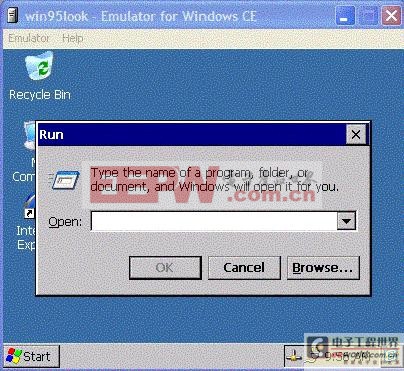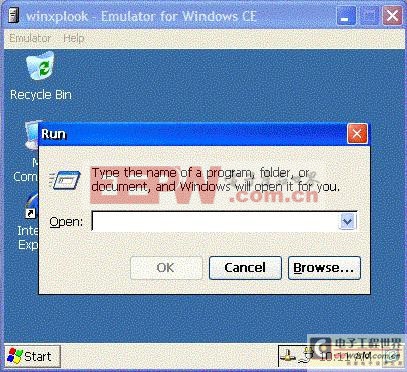定制 Windows CE .NET 用户界面
Mike Hall
Microsoft Corporation
Steve Maillet
Entelechy Consulting
April 4, 2002
// interface翻译成界面,部分时候翻译成接口
(没有全文翻译,只是摘记了一些有用的信息,和自己的一些理解)
WinCE 的UI是skinnable。
Recently, while preparing for a talk at an Embedded event, a bullet point in my presentation seemed to beg for elaboration: the skinnable UI for Microsoft? Windows? CE .NET. I had talked to this point at a number of conferences, but had spent little time playing with the code to produce a customized UI. Since I had a few moments in the speaker lounge (and also an article to write), it seemed a good time to take a look at how the UI can be customized for Windows CE. On my wish list: customized screen colors, Windows controls that don't look like they belong to Windows, an OK/Close button in the non-client area that looks like a smiley face, a replacement shell (perhaps based on Microsoft? Internet Explorer 5.5 browser), and a shiny bike with basket and bell for Christmas...
Okay, so on with the article; let's see what's lurking beneath the hood of the Windows CE UI.
Windows CE .NET 提供为你的嵌入式设计定制用户界面的能力。如 POS terminals, ATM machines, or other 'fixed function' devices。也可以用Internet 浏览器和应用程序.以前版本的WINCE也可以定制用户界面,但带有明显的WINDOWS外观和感觉。现在WINCE 。NET改变了这个。
这里有一些选择,在为一个Windows CE .NET 设备定制界面时:
· 使用 Microsoft Internet Explorer 作为设备的shell. 这是一个非常弹性的选择。使用HTML(和DHTML)编制高度定制化的用户界面是快速的,简单的和弹性的。可以充分利用位图,动画,动态。
· 创建一个独立的应用程序来取代标准shell。在概念上,这个和使用IE是类似的。是一个很好的选择在一个功能单一的设备上,如点销售终端(point-of-sale terminal)上。 It's possible to change the appearance of controls within an application by subclassing the control, which is achieved through GetWindowLong( ) and SetWindowLong( ) API's. (Feel free to check out any of the number of articles on MSDN that discuss subclassing.)
· 在操作系统里改变某些用户界面组件的外观。可以通过改变位图和代码来实现。
Microsoft在Windows CE .NET中提供了2种皮肤: Windows 95 外观和Windows XP 外观. 这些分别为通用控件,windows控件,和非客户区提供windows外观。“皮肤”文件 在下面文件夹处:
\WINCE420\PUBLIC\COMMON\OAK\DRIVERS\SKINNABLEUI.
在skinnableui 文件夹下提供的代码可以改动(因为是在public树下),可以被你的设备所采用。
Take a look in the skinnableui folder. There are two sets of user interface components: GWE/COMMCTRL (Windows 95 appearance) and GWEXP/COMMCTRLXP (Windows XP).
Here's how we choose which of the 'skins' is applied to our device:
1. Build an operating system image using the default catalog options; this will give a Windows 95 appearance.
2. 从catalog里选择Windows XP skin。在 Core O/S/Display Based Devices/Shell and User Interface/User Interface/Customizable UI/Windows XP-like sample skin. 加这个组件到平台里,或者设置the SYSGEN_XPSKIN 环境变量.
How do these skins differ? Let's take a look at some of the UI differences. We can then take a look at how to further customize the Windows CE .NET user interface.

Figure 1. Windows 95 外观,使用标准皮肤。

Figure 2. Windows XP 外观, 使用XP-风格皮肤。
Let's now examine how we modify the Windows CE .NET user interface. This includes:
· Changing the user interface colors.
· Modifying user interface bitmaps.
· Modifying Windows CE .NET controls appearance.
· Modifying standard UI dialogs (for instance, Startupwhich can be used to show device configuration or password screen, Out of Memory, and Touch Screen Calibration).
· Using Internet Explorer as the shell of our device.
Changing th
嵌入式新闻 嵌入式资料 嵌入式培训 嵌入式linux 嵌入式系统 嵌入式开发 嵌入式 相关文章:
- 煤矿井下综合自动化系统中的应用(04-06)
- 软件Overlay:程序编写与调试(01-20)
- USB数据通信接□模块的程序设计(10-17)
- 东江产业园:力争2017年产值达千亿(09-30)
- 硅谷数模的SlimPort扩大了Nexus7的显示屏选择(08-01)
- Lonworks控制网络技术在城市排水泵站自动化中的应用(06-06)
